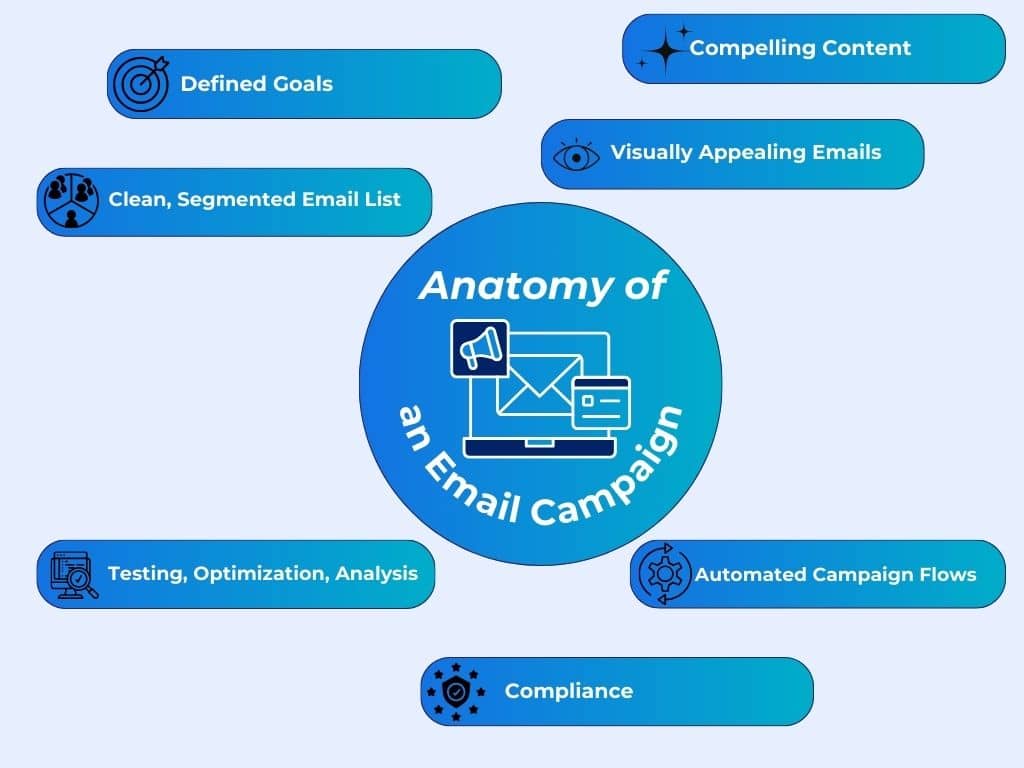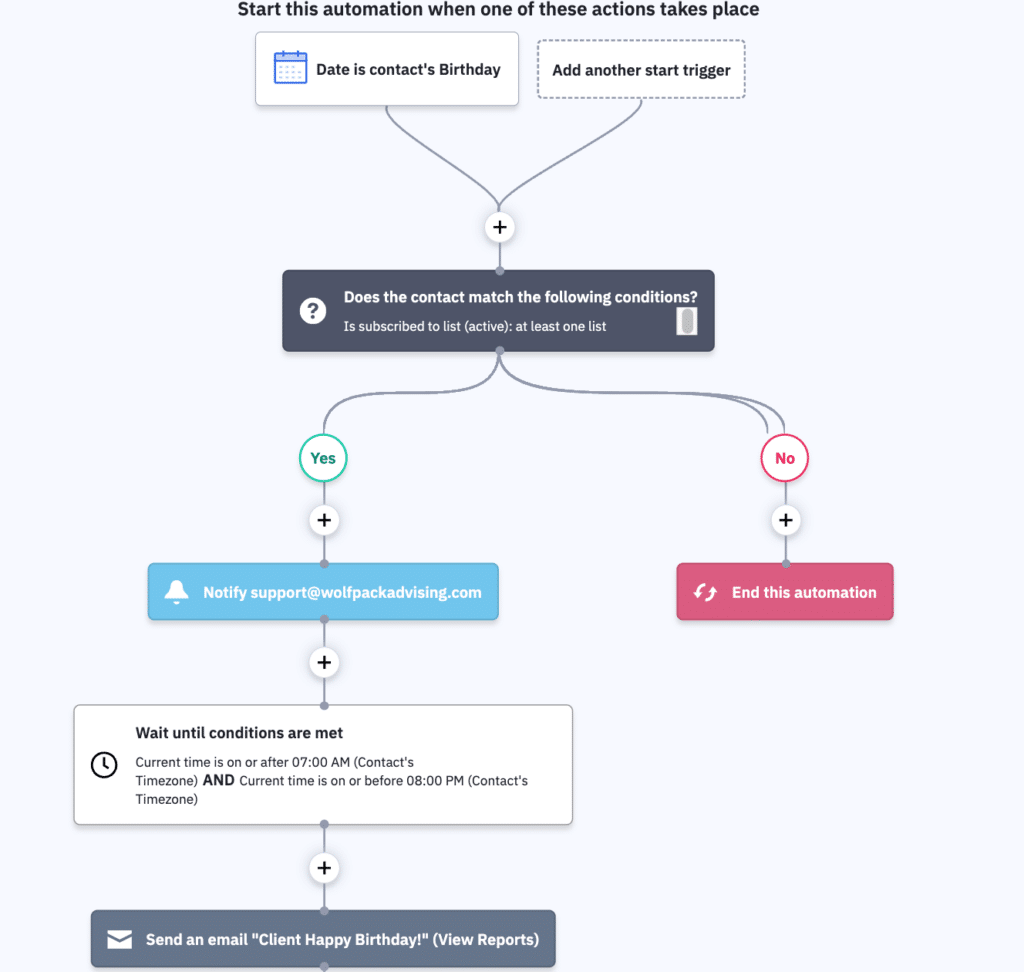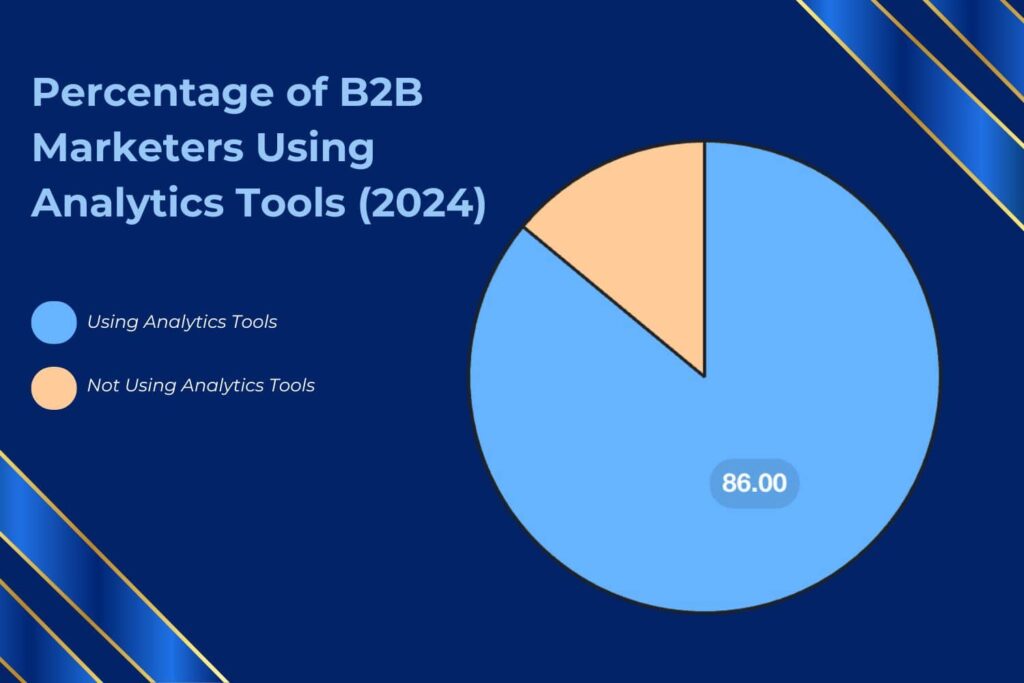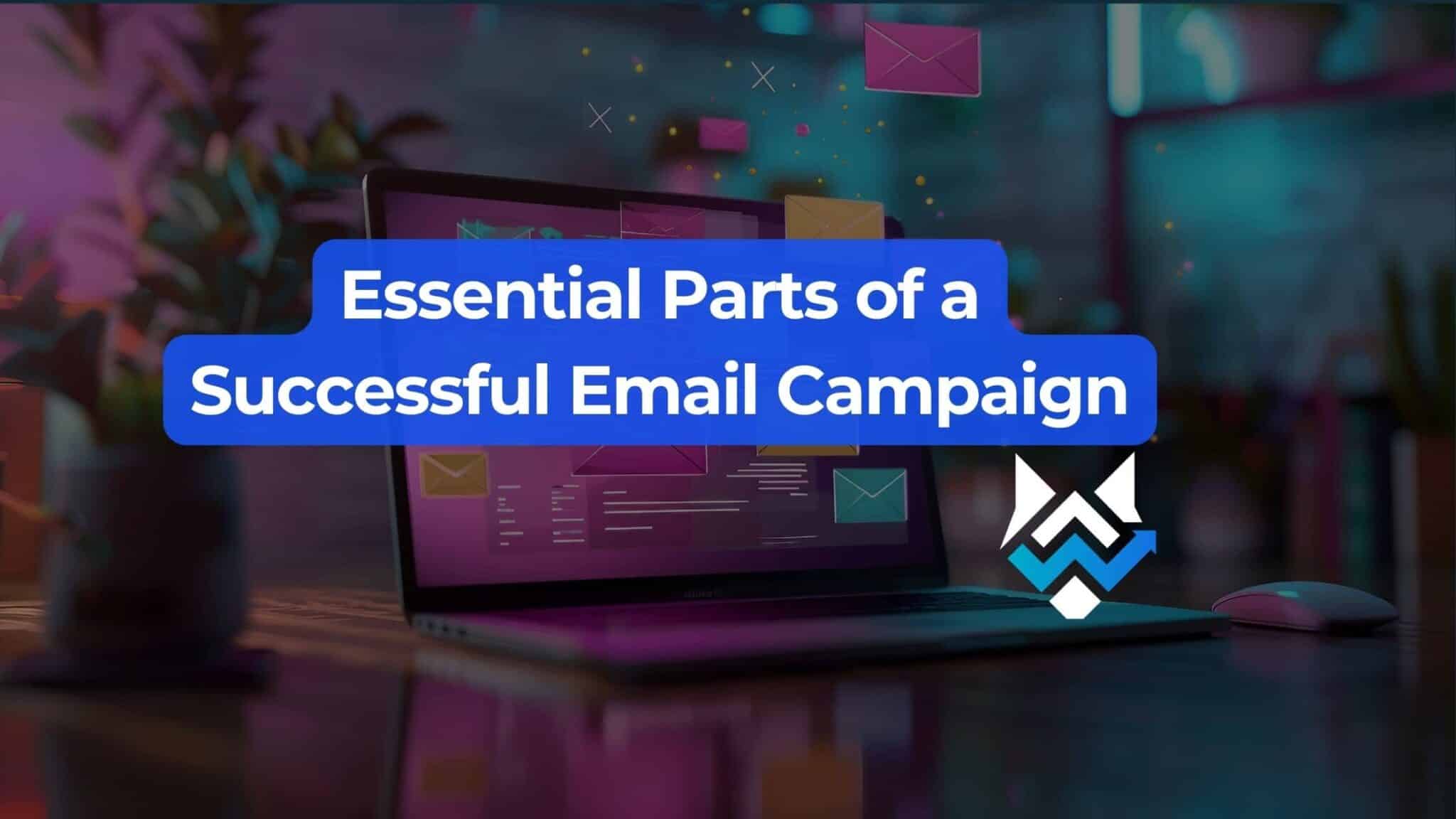Email marketing is a powerful way to connect with your audience, build relationships, and boost sales. To make a successful email campaign, you’ll need to understand and leverage the key components. This post will break down essential parts of an email campaign so you can get the most from each email.
From clear goals to compelling content and performance analysis, you’ll get a close look at how an effective campaign comes together. Discover the strategies and best practices that will help you optimize your emails and see results.
Building a Solid Campaign
At its core, an email campaign is a series of coordinated emails designed to nurture leads, inform customers, and drive conversions. A well-structured email campaign is the backbone of successful email marketing.
The structure includes everything from defining your objectives to analyzing performance. Each component of the campaign must work together seamlessly to engage your audience and achieve your goals.
When all parts are in harmony, your emails will not only reach your subscribers but also encourage them to take action.

Defined Goals
To begin, you’ll need clear, measurable goals for your campaign. When you define your objectives ahead of time, it’s simpler to gauge your campaign’s effectiveness and make necessary adjustments.
For example, common email campaign objectives include increasing sales, driving website traffic, boosting engagement, and building brand awareness. Align your email campaign goals with your overall business objectives by:
- Identify Your Main Objective – Again, determine what you want to achieve with your email campaign. This could be anything from creating brand awareness to promoting a new service.
- Be Specific and Measurable – Use metrics like open rates, click-through rates, conversion rates, and revenue to set benchmarks for success.
- Align with Business Strategy – Ensure your email campaign goals support your broader business goals. For instance, if your business aims to increase online sales, your email campaign should focus on driving traffic to your online store.
- Set a Timeline – Establish a realistic timeline for achieving your goals. This will help you stay on track and measure progress.
Clean and Segmented Email List
The quality of your email list is more important than its size. A well-segmented list allows you to send targeted messages that resonate with different groups of your audience.
- Grow Your List – Use strategies such as lead magnets (e.g., eBooks, webinars), sign-up forms on your website, and social media integration to attract subscribers. Make sure the sign-up process is straightforward and highlights the value of subscribing.
- Segment Your List – Divide your email list into smaller groups based on criteria such as demographics, past behavior, and purchase history. This allows you to tailor your content to specific audiences, increasing the relevance and effectiveness of your emails.
- Use Dynamic Content – Personalize your emails using dynamic content that changes based on the recipient’s preferences and behavior. This can significantly improve engagement and conversion rates.
- Maintain List Hygiene – Regularly clean your email list by removing inactive subscribers and correcting invalid email addresses. This helps improve your deliverability rates and ensures that your messages reach engaged and interested recipients.
Compelling Content
Equally important, engaging, relevant content is the heart of a successful campaign. Your emails need to capture your audience’s attention, encourage them to interact, and drive conversions. Keep these practices in mind as you start creating:
- Effective Subject Lines and Preheaders
- Personalization
- Storytelling
- Value-Driven Content
- Clear Calls to Action (CTAs)
The subject line is the first thing your subscribers see, so make it count. Craft concise, attention-grabbing subject lines that spark curiosity or offer value. Pair them with preheaders that complement and enhance the subject line, providing a sneak peek of what’s inside.
Then, personalize your content to address the specific needs, interests, and behaviors of your audience. This goes beyond just using the recipient’s name – use data insights to segment your list and create messages that resonate with each group.
Also, stories are powerful tools for engagement. Weave narratives that connect emotionally with your readers, making your message more relatable and memorable. Share success stories, customer testimonials, or behind-the-scenes glimpses of your brand.
Every email should provide something beneficial to your subscribers, whether it’s useful tips, exclusive offers, or insightful information. Relevant and valuable content will keep your audience engaged and looking forward to your emails.
Finally, guide your readers on what to do next with compelling CTAs. Whether you want them to read a blog post, shop a sale, or sign up for a webinar, make your CTAs stand out and be specific about the benefits of taking action.

Example of a neat email with clear branding, CTAs, and offered value.
Visually Appealing Emails
A visually appealing email not only captures your audience’s attention but also enhances their overall experience. Well-designed emails are more likely to be read and acted upon. Here’s how to design your emails effectively:
- Professional Layout
- Mobile Optimization
- High-Quality Images
- Consistent Branding
- Effective CTAs
- Accessibility
Firstly, use a clean, organized structure that is easy to navigate. Break your content into clear sections with headings and ample white space to make it digestible. Ensure your design aligns with your brand’s visual identity to maintain consistency and build trust.
Then, with many people checking emails on their mobile devices, it’s essential to ensure your emails look great and function well on any screen size. Use responsive design techniques to achieve this, ensuring a seamless experience for all subscribers.
Additionally, incorporate high-quality images to enhance your message. Images should break up the text, illustrate points, and add visual interest without overwhelming the content. For fast loading times that keep your emails efficient and user-friendly, make sure to optimize your images, too. Maintain consistent branding by using your brand’s colors, fonts, and logo to create a cohesive and recognizable look.
To make your call-to-action buttons stand out, use contrasting colors, clear text, and strategic placement to make your CTAs easily noticeable and clickable. Effective CTAs are visually appealing and aligned with the overall design of your email, encouraging readers to take the desired action.
Lastly, but no less important, design your emails with accessibility in mind. Use alt text for images, ensure sufficient color contrast, and choose readable fonts. Making your emails accessible ensures that all subscribers, including those with disabilities, can engage with your content.
Automated Campaign Flows
Email automation streamlines your marketing efforts, allowing you to send timely and relevant messages to your subscribers without manual intervention. Implementing automation ensures that your emails are sent at the right time based on subscriber behavior, preferences, and interactions.
This consistency helps maintain engagement and nurture relationships over time. Several types of automated flows can be beneficial for your email campaigns:
- Welcome Series – Introduce new subscribers to your brand, set expectations, and provide valuable information or offers.
- Cart Abandonment – Remind customers who left items in their shopping cart to complete their purchase, often with an incentive.
- Re-engagement Campaigns – When you have a chunk of inactive leads, reach out with special offers or content to reignite their interest.
Setting Up and Managing Automation
1) Identify Key Trigger Points – Determine the actions or behaviors that will trigger your automated emails, such as sign-ups, purchases, or inactivity.
2) Create Targeted Content – Develop personalized and relevant content for each stage of the workflow to ensure it resonates with your audience.
3) Monitor and Adjust – Like all your other digital content, don’t forget to review the performance of your automated sequences. Use data insights to make necessary adjustments and optimize your workflows for better results.

An example of an automation for a “Happy Birthday” email to be sent based on contact details.
Testing, Optimization, Analysis
To refine your email campaigns and maximize their effectiveness, keep up with continuous testing, optimization, and analysis.
Testing helps you understand how well your automation is working and identify areas for improvement.
Elements to Test
- Trigger Points – Verify that the right actions are triggering the correct emails. Make sure there are no delays or errors in the process.
- Content Relevance – Assess the relevance and engagement level of your automated emails. Ensure the content aligns with the stage of the customer journey and meets subscribers’ expectations.
- Timing and Frequency – Test different sending times and frequencies to determine what works best for your audience. Avoid overwhelming subscribers with too many emails in a short period.
- Engagement Metrics – Monitor open rates, click-through rates, and conversion rates for each email in the workflow. Identify any drop-offs and investigate potential causes.
After you activate an automated sequence, frequently analyze user data. To do this, start by refining the trigger points and timing based on performance data.
Next, streamline your workflows if necessary. This may involve simplifying sequences and removing any redundant or underperforming emails. Remember, the goal is to create a more efficient and effective sequence that delivers the desired results without overwhelming your subscribers.
Key Metrics to Track
To get a reading of your campaign’s effectiveness and make data-driven improvements, keep an eye on a few indicators.
- Open Rates – Indicates how many recipients opened your email. High open rates suggest that your subject lines and preheaders are compelling and clickable!
- Click-Through Rates (CTR) – Measures the percentage of recipients who clicked on links within your email, reflecting content engagement.
- Conversion Rates – Shows the percentage of recipients who completed a desired action, indicating your campaign’s effectiveness.
- Unsubscribe Rates – Help you understand if your content is resonating or if you’re sending too frequently.
Use email marketing platforms and analytics tools to gather and analyze important metrics. For example, tools like Google Analytics, Mailchimp, and HubSpot offer in-depth insights into your email performance.
In 2024, around 86% of B2B marketers are already using analytics tools to assess the performance of their email marketing campaigns!
Refining Based on Insights
Once you have collected and analyzed the data, use the insights to make informed adjustments.
For instance, if open rates are low, consider testing different subject lines. If CTR is below expectations, experiment with various types of content and CTAs. On a schedule that works for you, refine your strategies based on data to keep improving.

Compliance with Email Regulations
Compliance with email marketing laws is essential to maintain audience trust and avoid legal issues.
The GDPR (General Data Protection Regulation) applies to businesses operating in or targeting individuals in the European Union. It requires explicit consent for data collection and allows individuals to access and delete their data.
Similarly, the CAN-SPAM Act, a U.S. law, sets rules for commercial emails, including accurate subject lines, clear identification as an advertisement, and an easy opt-out mechanism.
Lastly, CASL (Canada’s Anti-Spam Legislation) mandates express consent for sending commercial electronic messages to Canadian residents, clear identification of the sender, and a simple unsubscribe option.
Best Practices for Maintaining Compliance
- Obtain Explicit Consent – Ensure you have clear and documented consent from your subscribers before sending them emails. Use double opt-in methods to confirm their intent.
- Provide Clear Opt-Out Options – Include an easy-to-find unsubscribe link in every email. Honor opt-out requests promptly to maintain compliance and trust.
- Accurate and Transparent Information – Ensure your subject lines, sender information, and email content are truthful and not misleading. Clearly identify your business and the purpose of the email.
- Manage Subscriber Data Responsibly – Keep your subscriber data secure and up-to-date. Allow subscribers to access and update their information easily.
Wrapping Up
In summary, leveraging each of the essential parts of an email campaign is crucial for connecting with your audience and driving results. From clear goals to effective automation, each step plays a vital role. Testing and optimization are your exclusive insights into how the content is performing with your customers.
Ready to elevate your email campaigns? Schedule an online consultation with Wolfpack Advising to fine-tune your strategy today.





